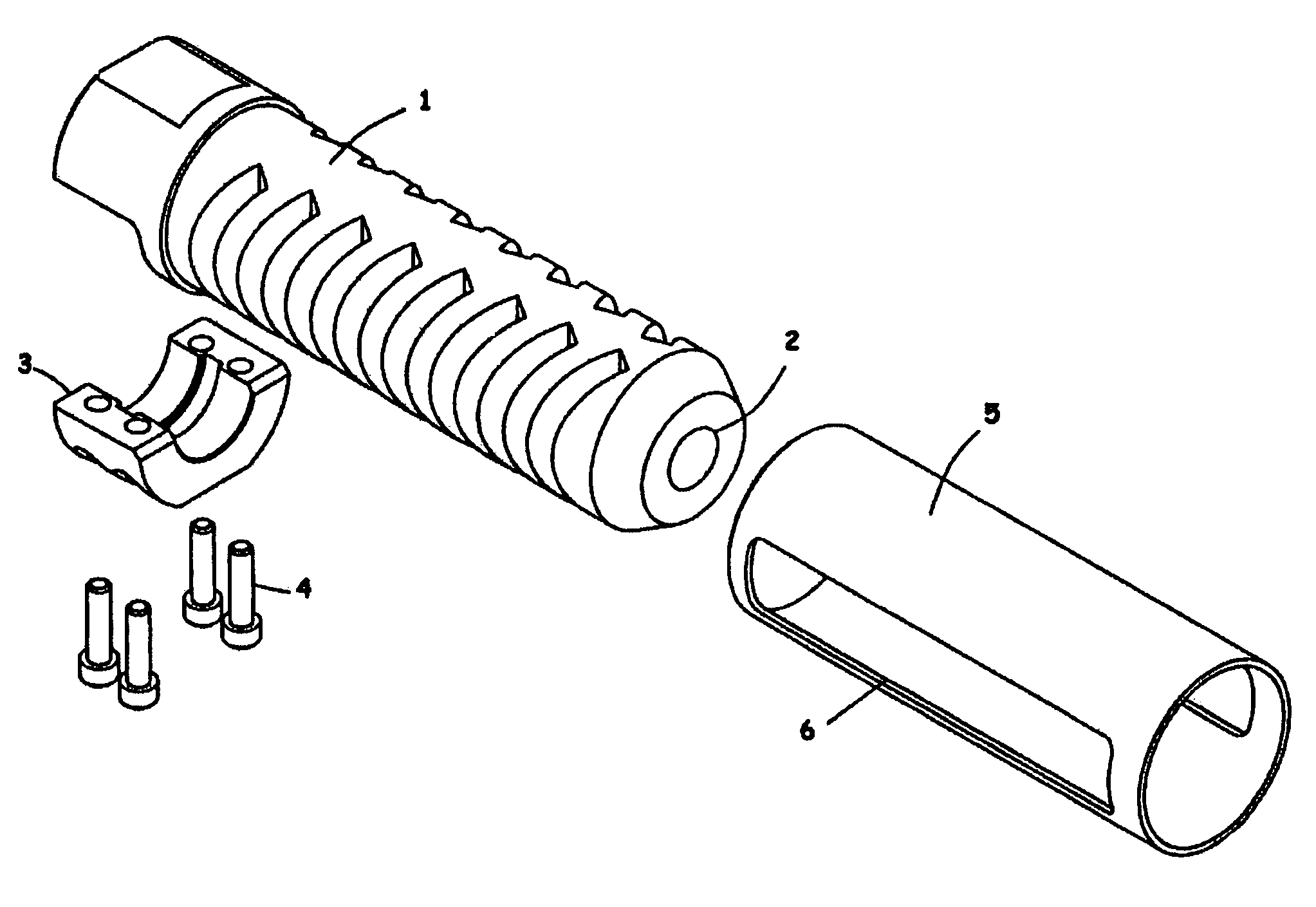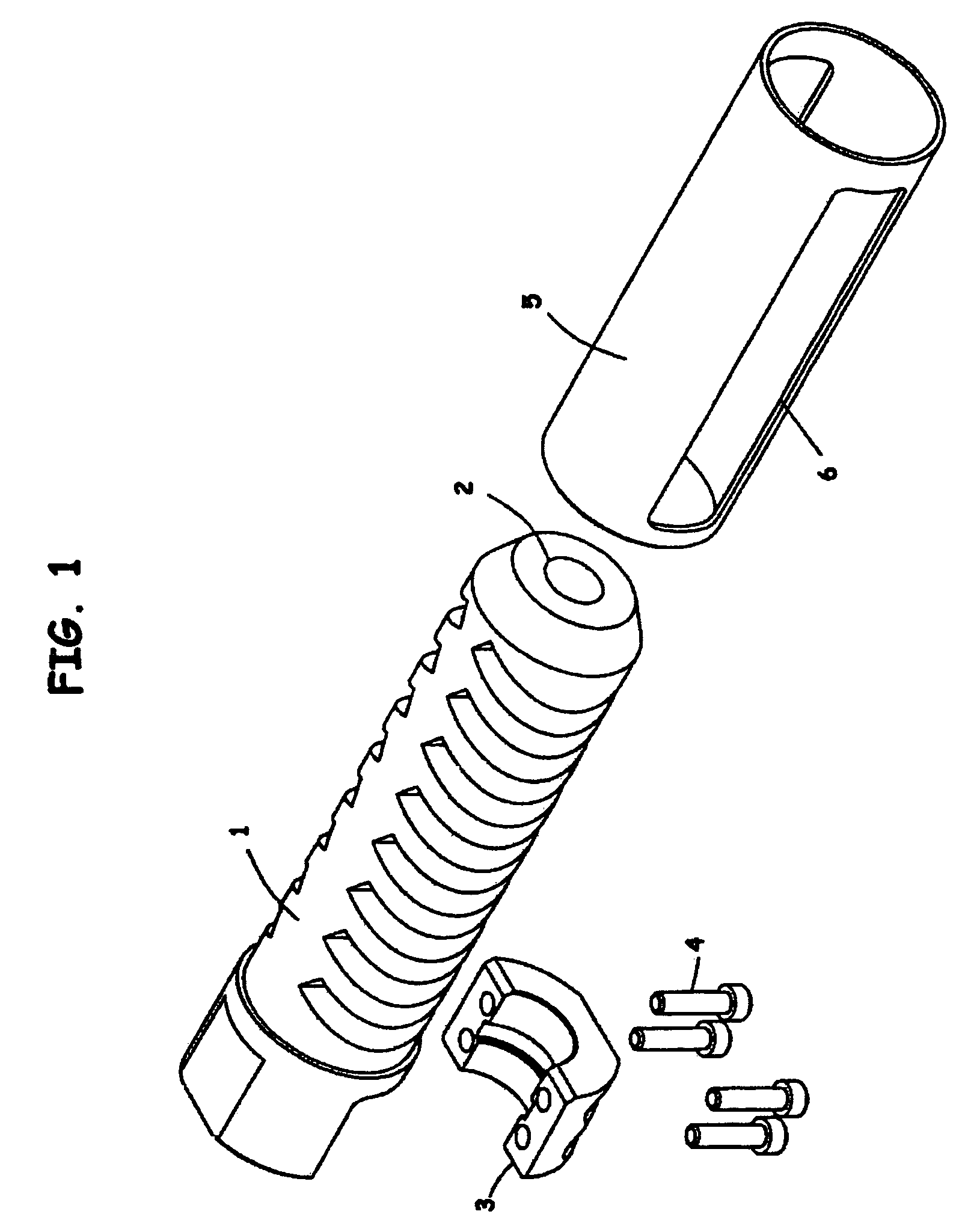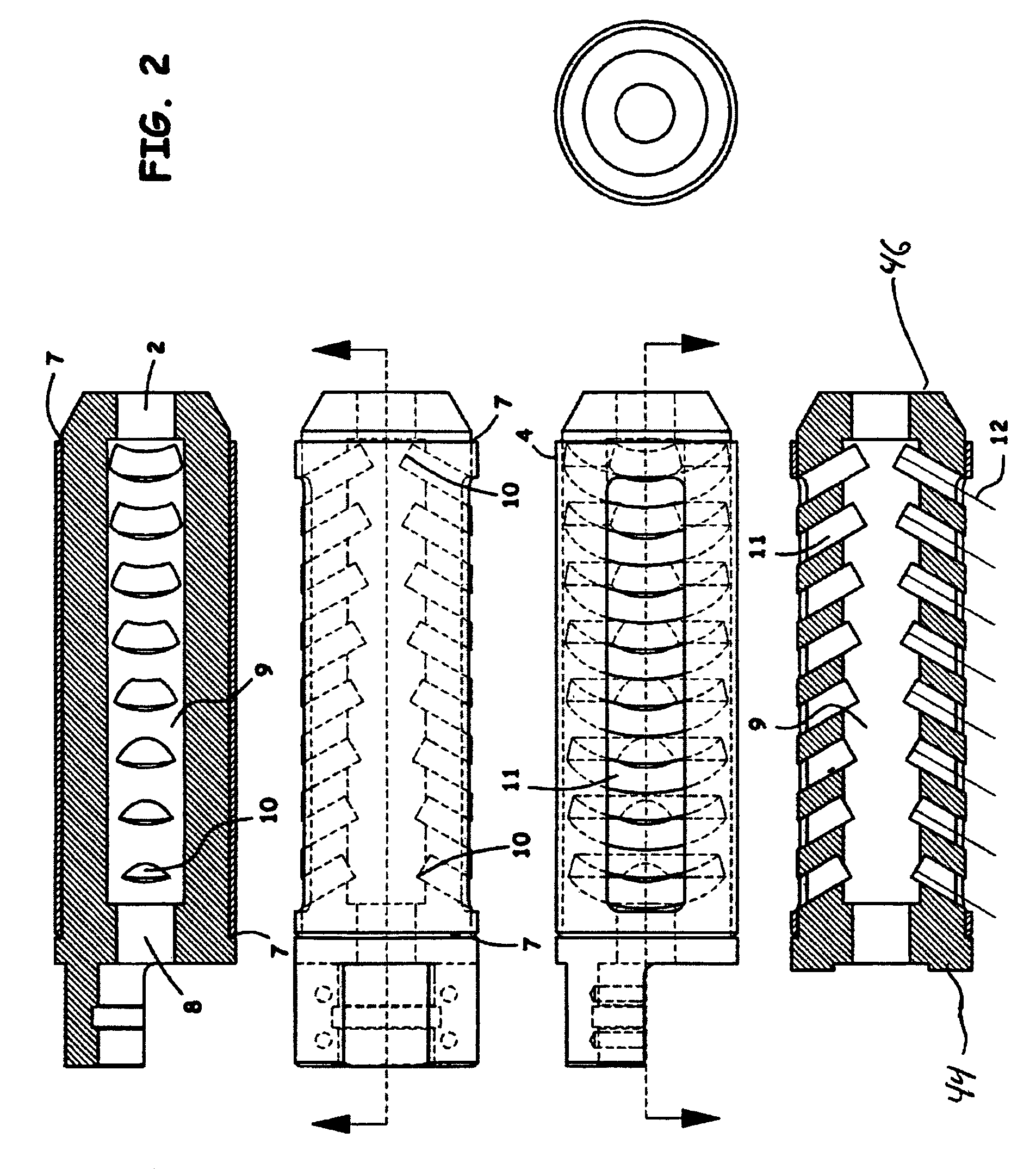[0014]It is an objective of the subject invention to redirect the
propellant gases ejected from the
gun barrel muzzle of large
caliber rifles to produce reaction vectored forces using the same propellant gas to counteract the recoil inertial forces of the accelerated bullet without developing an uncomfortable or unsettling shockwave at the shooter's position or the spotter's side-position.
[0020]A further feature of several embodiments of the invention is the effect that the vertical slots may have on the supersonic gas exiting through the laterally mirrored slot pairs. The gas entering the plenum(s) may be traveling supersonically forward. The pressure may be relieved at the sides through the exhaust ports. The gas must change direction and in doing so it also exchanges
momentum with the
brake and thus with the gun. The gas may slam into a forward face of the vertically
cut vent slots on the outer side of the
brake port. When it does so, the gas
stream may be forced to
fan out and flatten from a narrow flow
stream equal in size to the port orifice. This cools the flow with an effect discussed below. This fanned out jet of cooling hot gas leaves the slot areas. This
cooling effect is enhanced by the turbulence generated by the irregularly shaped orifice holes. Across the width of the slot, progressing from the forward to the rearward sides, there develops a velocity gradient across the gas flow as the velocity is seen to go from a high value to a lower value, which tends to break up the coherence of any
exhaust gas shock wave coming through the orifice.
[0022]An exterior plenum may function to further slow down the gas by partial containment and to disrupt the streamed flow of the exhausting gases as well as to direct them rearward for the recoil thrust cancellation effect. Recall that the forward-most vertical slot wall fans out the gas exiting the interior plenums. The upper and lower extremities of the flow fan may be intersected and disrupted by the confining walls of the tube on the top and bottom sides of the tube slot. This reshapes the flow pattern of the gas immediately exiting the vertical slots from a simple fan to a U-shaped pattern at the exit interface, where the base of the U-shape is in a forward position, flowing off of the forward-most face of the slot and streams forming the legs of the U-shape being the concentrated flow patterns at the top and the bottom. The effect is to further mix the flow shedding from the vertical slots and the tube slot, creating a concentrated disrupted flow
stream that is characterized by varying velocity gradients in all reference planes.
[0023]The shape and turbulent mixing characteristics of the flow emanating from each exterior external brake port is a function of the flow velocity and volume of
gas passing through the interior plenums. In general, as stated above, the
resultant force generated by the exhausting gas tends to be equal for each vent, yet, because the velocities are different due to the position of the plenum orifices with respect to one another in the rearward, or forward sense, and the pressure drop of the propellant gas, the further the gas has traveled beyond the
barrel muzzle, the flow pattern will appear different. The
cumulative effect of all of the ports exhausting gas at nearly the same time but at different velocities is that no coherent
shock wave front can form. Contrast this with the
shock wave developed by the best conventional muzzle brakes and the advantages of this novel design will be more apparent. Any coalescence of individual shock fronts developing and adding is obviated by the generation of multiple turbulent eddies within all flows. The turbulence and time spent in disruptive energy dissipating flow patterns as the plenums fill, then empty, and quickly drop in pressure after the bullet ejection event, tends to cool the hot gases more quickly than if the flows were less disrupted. The cooling has the effect of shrinking the exhausted hot gas faster, further reducing shock
waves that are either perceived as sound, or felt on the shooter's or spotter's body.
[0025]The resulting inventive design is a muzzle brake for large caliber rifles that is comprised of two easily machined and welded
metal components that allows for the quick and effective exhaustion of large volumes of propellant gas through variously sized, arranged, and force vectoring ports, which object has not been addressed by the prior art. This novel inventive design maximizes the generation of recoil canceling
thrust vectoring forces, minimizes the shock wave effects exhibited in an amelioration of the sound report, and minimizes the
lofting of ground-borne debris into the surrounding air at the shooter's position, all of which enhances the shooter's comfort and his ability to stay sighted on the target, or reacquire the target, for faster successive firings.
 Login to View More
Login to View More  Login to View More
Login to View More 


